Looking for the most popular roof styles?
Whether you’re building a new home or putting on an addition, you have an opportunity to pick from many different roof styles to both enhance the style of your home and get you the best protection against severe weather. Believe it or not, there are dozens of different roof styles to choose from that vary in height, style, pitch, shape, and more. We will go through some of the most popular roof types to help you determine which is the best for you and your new home, plus the benefits of each.
Gable Roof
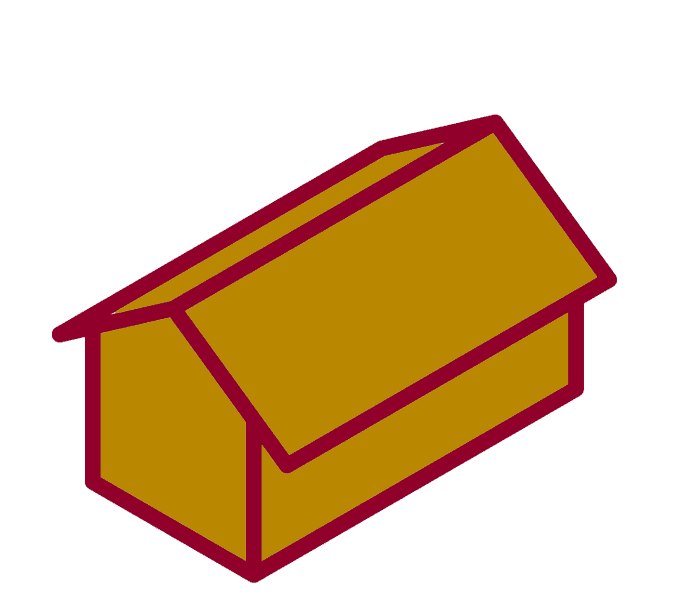
Let’s start with probably the most popular type of roof: the gable roof. When you imagine a house in your mind, it’s probably the first thing you think of. It’s a square home with two slopes pitching in the middle to create a perfect triangle roof. A gable roof is just that; two slopes, one on each side, coming together on the top peak with their ends open. It’s like a tented roof, simple to install and maintain, and works with just about any home style.
Benefits of a Gable Roof:
- Great for shedding water and snow.
- There are no valleys or other spots susceptible to water leaks.
- Make way for plenty of attic space on an upper level.
- Well-ventilated.
- Easy to install and repair.
Downfalls of a Gable Roof:
- Prone to wind damage (wind can easily lift of the edges)
- At risk of collapsing if improperly installed
Clipped Gable

There are many variations of the gable roof, with clipped being one of the most common. A clipped gable, also called a jerkinhead or hipped gable roof, has a small edge at the peak of the point where the two slopes come together. It’s a tiny detail that can drastically change both the look and the function of your home. The small clip on the front of your home can showcase your beautiful shingles and also make just enough shade to put a window up near the point of your roof in an attic or upper floor bedroom. They are most commonly seen on craftsman or bungalow-style homes.
Benefits of a Clipped Gable Roof:
- Visually pleasing
- Showcase your home’s shingles.
- Shade upper floor windows.
- Reduce wind force.
Downfalls of a Clipped Gable Roof:
- Increases cost compared to gable roof due to more complex design
- Minimal headspace on the upper level
Dutch Gable
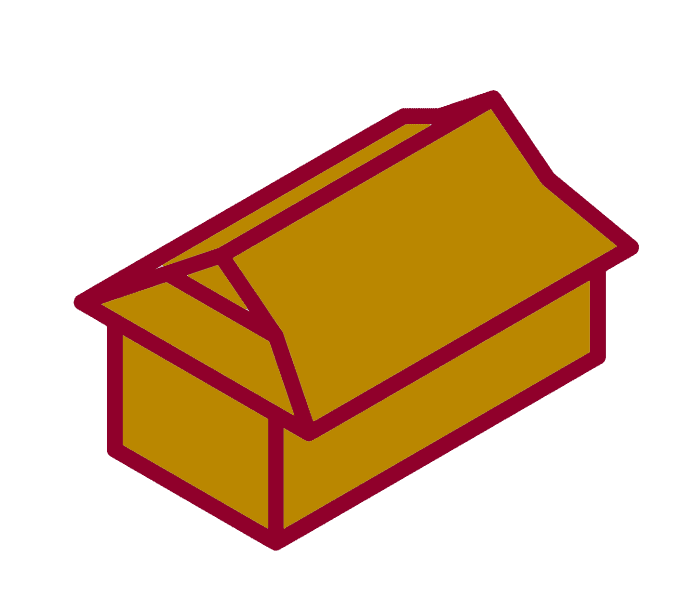
Yet another style of the gable roof is the dutch gable. A Dutch gable roof is a combination of a hip roof and a gable roof. It has the hipped surface on the front of the home, but with a tiny gable or “gablet” up top that creates a small space with enough room for a window or small balcony near the roof’s peak. It’s perfect for those homes utilizing their upper floor attic space for a bedroom or living space because it allows for more natural light to enter.
Benefits of a Dutch Gable Roof:
- Allows more natural light, which can help with heating in the winter
- A more unique look from a traditional gable roof
- Works with any type of roofing material
Downfalls of a Dutch Gable Roof:
- Multiple pitches make for a complex installation
- Requires extra details to prevent water leaks at the joints
- Asphalt shingles can wear quickly using this design (metal is ideal)
Flat
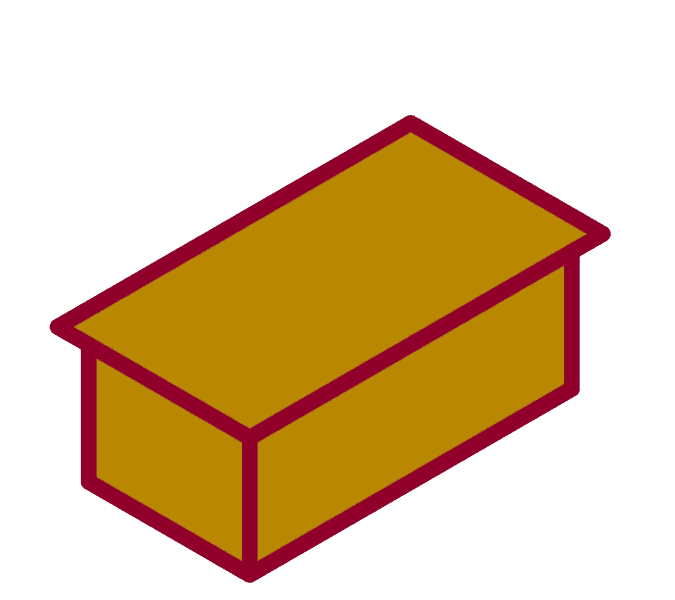
A flat roof is more commonly seen used on commercial properties, but the occasional residential may also benefit from utilizing a flat roof. Homes with a multi-level design or an attached garage could utilize a flat roof in any number of ways. Flat roofs have a very slight slope to allow for rainwater run-off but are essentially flat enough to be able to walk on. Flat roofs can be made of many different materials, from rubber to BUR (built-up roofing), asphalt rolls, and even gardens that make for a completely sustainable roof option. One downfall is they can be susceptible to leaks if they are poorly installed, leading to standing water eventually breaking through the roof.
Benefits of a Flat Roof:
- Great use of space: can be converted to an outdoor living space or make room for an additional level to be built on.
- Fast and easy to install.
- Makes room for solar panels or a sustainable garden: very eco-friendly.
- No issues with drainage.
Downfalls of a Flat Roof:
- Higher likelihood of pooling water
- Can wear quickly without proper installation and maintenance
- Garden flat roofs can lead to invasive plant species causing issues with the building if not careful
Gambrel
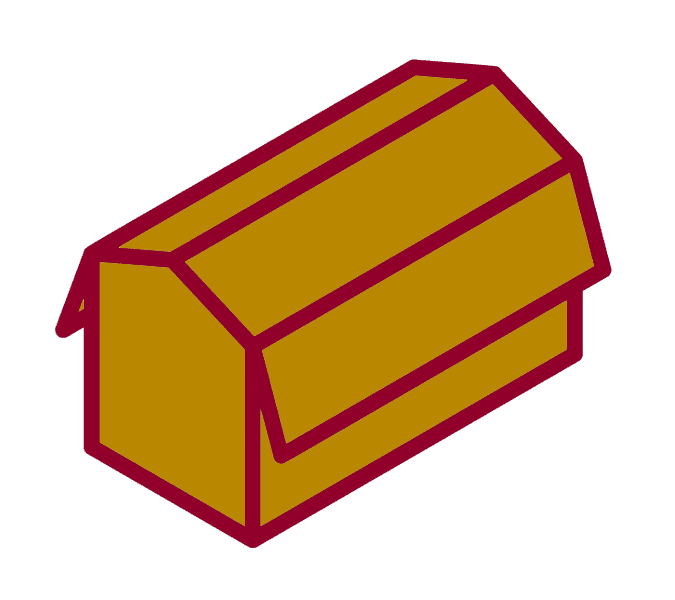
A gambrel roof is basically what you’ll find on a classic red barn. It has two sides with two slopes each for four slopes from the bottom to the top peak of the roof. It makes a shape kind of like half of a stop sign with the four sides, not all of the equal lengths. This design allows plenty of space to have an upper-level attic living space with more than enough room on each end of the home to put large windows. There is also a much larger surface area to place shingles, so homeowners should heavily consider how they want the shingles to look and function when deciding to build a gambrel-style roof.
Benefits of a Gambrel Roof:
- Tons of space for an attic, storage space, or living area
- Needs few materials to build
- Excellent drainage and water-shedding
- Has space to add additional windows for natural light
- It has a beautiful historical look to it
Downfalls of a Gambrel Roof:
- Poor resistance to accumulating snow and ice
- It can be challenging to customize and repair
- Highly susceptible to wind damage
Hip

A hip roof has four sides of equal size that all come to a point in the center of the roof. It’s kind of like a pyramid shape but with four sides. This roof style will make your roof shingles or whatever material you use highly visible, so if you want to showcase that, choose wisely when picking colors and textures for your new roof. Hip roofs are very common in 70’s style ramblers and single-story homes and have a very mid-century modern look.
Benefits of a Hip Roof:
- The four equal sides at a low-slope make it one of the most sturdy roof styles of them all.
- Can withstand very high winds.
- Perfect for areas that get a lot of snow.
Downfalls of a Hip Roof:
- More costly than other roof types
- More complex to install and maintain
- Can lead to poor ventilation
- Creates less room in the attic
Mansard

Mansard roofs come from classic french architecture of the 1700s and can be found frequently in Europe, but have also made their way to America as a very unique style of roof. It has a four-sided design with four low-slope sides at the point and four high slopes on each side. Again, this roof style is ideal for those wanting to utilize a large attic floor. However, a benefit to the mansard design allows for the ideal place to input dormer windows from the roof.
Benefits of a Mansard Roof:
- Significantly more attic space than other roof types
- It makes it easy to expand on a home/living space
- Ideal opportunity for dormer windows
- Can work on most building styles
Downfalls of a Mansard Roof:
- Might require special permits to install
- Poor water resistance
- Complicated to install and repair
- High installation and repair costs
Shed
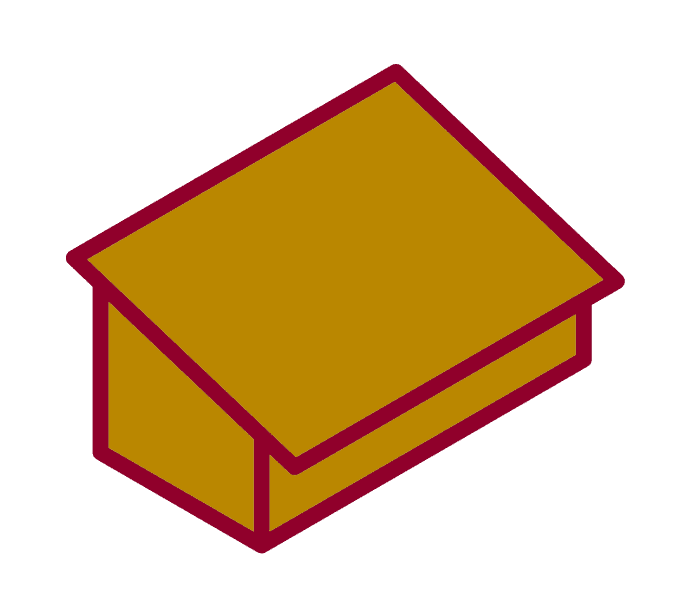
A shed roof is like having just half of a gable roof. It’s similar to a lean-to as it is just a one-sided slope on the building. This roof style is prevalent on sheds, porches, and side additions to homes but has become increasingly popular as an ultra-modern design for new builds. This roof style opens up endless possibilities for unique design such as large ascending windows, exposed beams on the interior, and including more than one shed roof on different portions of the home.
Benefits of a Shed Roof:
- Affordable
- It takes fewer materials to build than any other type of roof
- Great for modern design
- No risk of standing or pooling water
- It can easily shed heavy snowmelt
- Perfect for installing skylights
- Provides unique design opportunities
Downfalls of a Shed Roof:
- You must install box gutters to handle the increased load of rain
- It doesn’t work with just any type of home
- It won’t work well for large homes
Picking the Best Roof Style for Your Home
These are just a few of the most common roof types to choose from. As you can see, they are definitely not a one-size-fits-all, and as amazing as the benefits are, they each come with their fair share of downfalls as well.
Hopefully that this list can help any prospective home builders or homeowners looking for a refresh get a good idea of how they can modernize and improve on their home with a new roof in addition to new roofing materials. If you’re interested in re-roofing with us, contact us today! We would love to work with you to get you the roof of your dreams.
